At https://phys.org/print431281100.html … southern ocean drives massive blooms of tiny phytoplankton – as seen by a NASA satellite …
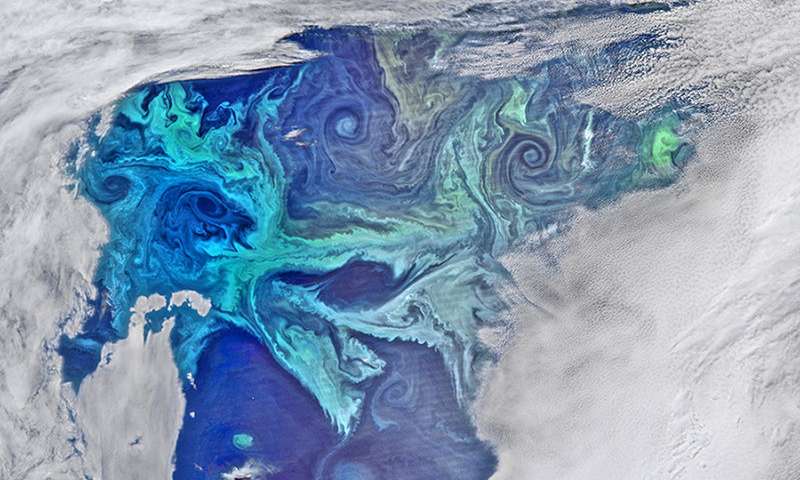 … a massive summertime bloom of algae expands across 16 per cent of the global ocean. It is known as the Great Calcite Belt as it is composed of microscopic phytoplankton, coccolithophores, and these are what chalk geology are made up of, lots of coccolithophores. Satellites can see light reflected by the coccolithophores but under a microscope they are white, the shells being made out of calcium carbonite. They reflect sunlight back out of the oceans. An international team have been trying to understand what causes the blooms. Dissolved iron in ocean water seems to be a key factor n controlling populations of the algae. They require iron in order to grow. Coccolithophores are more abundant at locations with elevated iron. When coccolithophores build their chalk plates (shells) they remove carbon from the water – but they also release carbon dioxide back into the surface ocean. So, how did chalk formations grow as they consist almost entirely of the chalk (in southern Britain) which is hundreds of feet thick. There are basically three chalk layers, divided by hard chalk layers that are said to be former sea bottoms as the hard chalk has what looks like the holes of burrowing animals such as worms …
… a massive summertime bloom of algae expands across 16 per cent of the global ocean. It is known as the Great Calcite Belt as it is composed of microscopic phytoplankton, coccolithophores, and these are what chalk geology are made up of, lots of coccolithophores. Satellites can see light reflected by the coccolithophores but under a microscope they are white, the shells being made out of calcium carbonite. They reflect sunlight back out of the oceans. An international team have been trying to understand what causes the blooms. Dissolved iron in ocean water seems to be a key factor n controlling populations of the algae. They require iron in order to grow. Coccolithophores are more abundant at locations with elevated iron. When coccolithophores build their chalk plates (shells) they remove carbon from the water – but they also release carbon dioxide back into the surface ocean. So, how did chalk formations grow as they consist almost entirely of the chalk (in southern Britain) which is hundreds of feet thick. There are basically three chalk layers, divided by hard chalk layers that are said to be former sea bottoms as the hard chalk has what looks like the holes of burrowing animals such as worms …
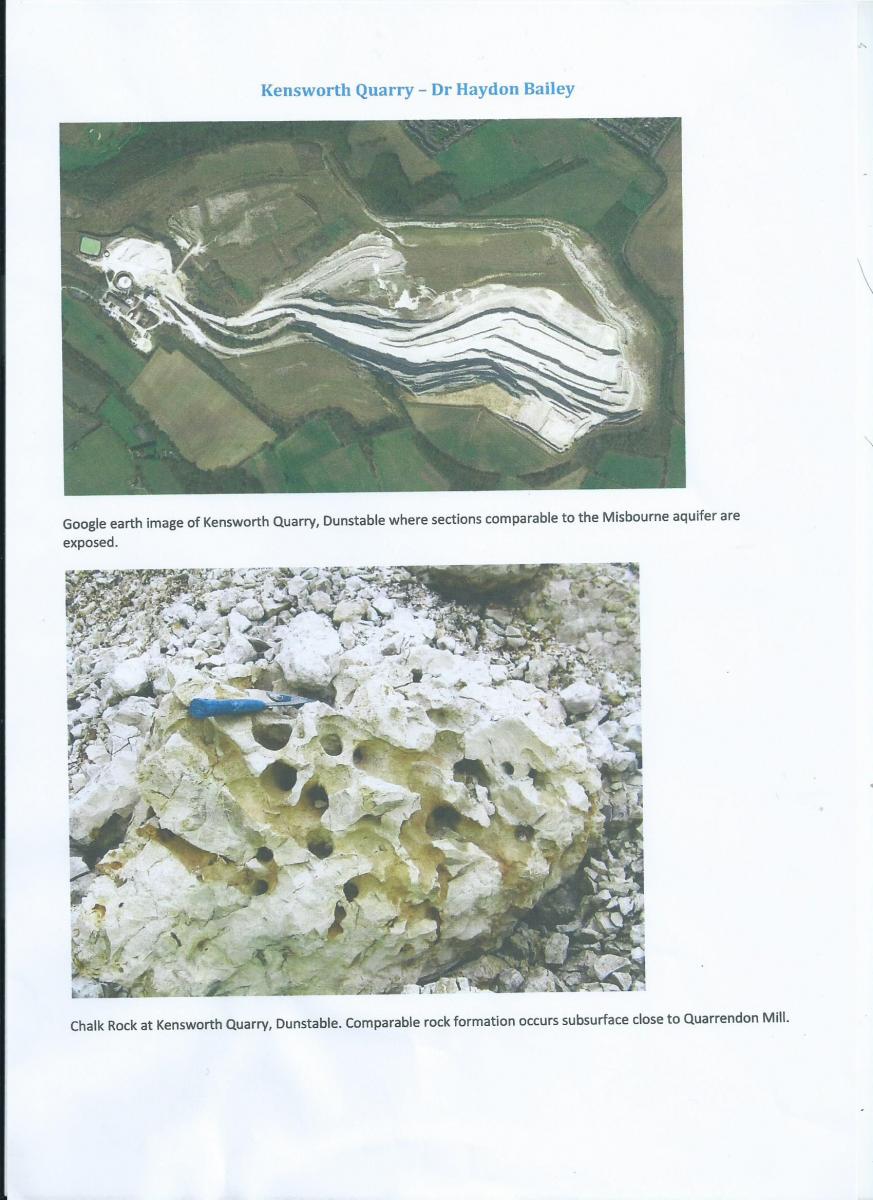 … and the chalk itself can be seen to have fault lines, some of which allow water to flow quickly through the chalk to the aquifer below, usually situated at a marl layer (chalky clay). The chalk aquifer of the Chilterns is the main water supply for NW London. These marl layers align with the spring line along the escarpment of the Chilterns, the source of streams and rivers.
… and the chalk itself can be seen to have fault lines, some of which allow water to flow quickly through the chalk to the aquifer below, usually situated at a marl layer (chalky clay). The chalk aquifer of the Chilterns is the main water supply for NW London. These marl layers align with the spring line along the escarpment of the Chilterns, the source of streams and rivers.
Chalk Mines. back in 2006 the BBC reported on a sink hole at an infants school in Pinner – see www.bbc.co.uk/news/uk-england-london-39371411 and after investigation by council appointed engineers and geologists it was found the school had been built on top of a network of chalk tunnels, mainly dug out in the 19th century. For an overview of this see www.pinnerhill.org/id3.html
It would seem that not so long ago geologists were able to climb down into the Pinner chalk mine and clamber through the tunnels. See the images below which can be found at www.alpertonhistory.info/pinner-chalk-mine/ …
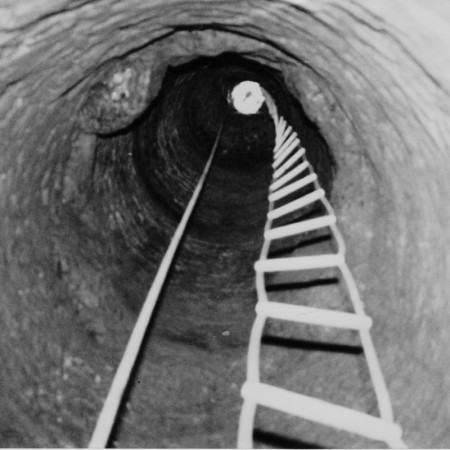
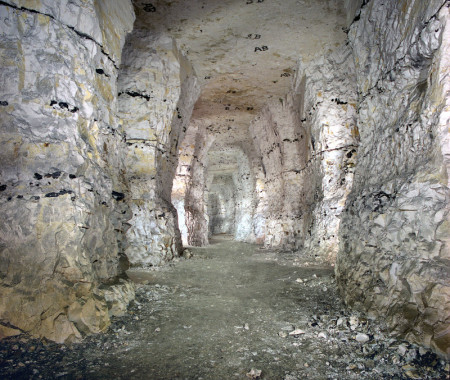
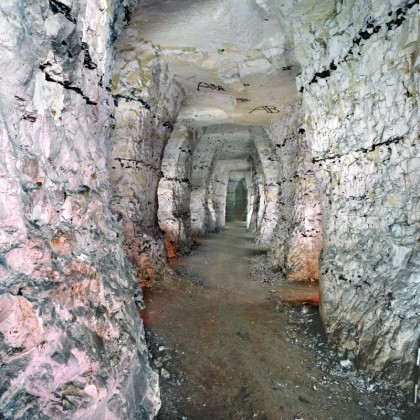
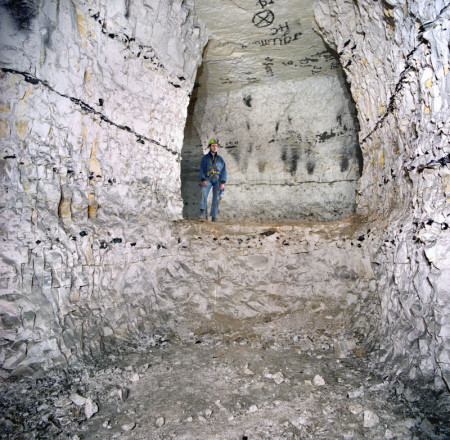 … and no wonder sink holes are common.
… and no wonder sink holes are common.
